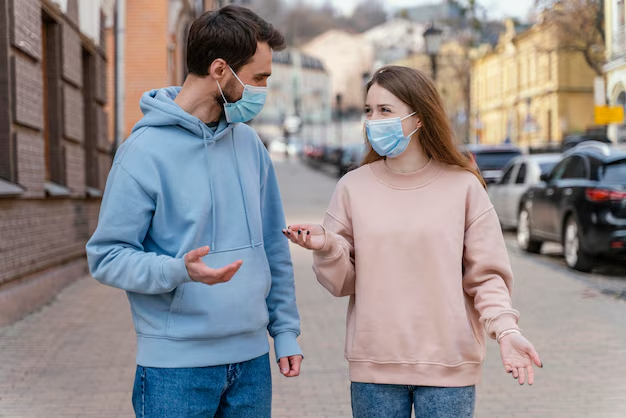Understanding the Distinction Between Pneumonia and Walking Pneumonia: What You Need to Know
When you hear the term pneumonia, it might conjure images of a serious respiratory illness requiring bed rest or even hospitalization. On the other hand, walking pneumonia—despite its alarming name—suggests a milder condition. Yet, what really sets these two apart? Walking through this nuanced difference can help you better understand the symptoms, causes, and treatment options associated with each. Here's a closer look at how these conditions differ and what that means for those affected by them.
What is Pneumonia?
Pneumonia is an infection that inflames the air sacs in one or both lungs. These air sacs can fill with fluid or pus, causing symptoms that can vary in severity. Common symptoms include:
- Cough with phlegm or pus
- Fever
- Chills
- Difficulty breathing
This illness can be caused by a variety of organisms, including bacteria, viruses, and fungi. It's a serious condition that often requires medical attention, especially for vulnerable groups like the elderly, infants, and individuals with weakened immune systems.
Types of Pneumonia
Pneumonia can be classified based on where or how it was acquired:
- Community-acquired pneumonia (CAP): Occurs outside of hospitals or healthcare facilities. The most common type.
- Hospital-acquired pneumonia (HAP): Acquired during hospitalization for other conditions. Often more resistant to antibiotics.
- Ventilator-associated pneumonia (VAP): Specific type of HAP that occurs in people using ventilators.
- Aspiration pneumonia: Caused by inhaling food, drink, vomit, or saliva into the lungs.
What is Walking Pneumonia?
Walking pneumonia, on the other hand, is a colloquial term. Its scientific name is atypical pneumonia. This condition is generally milder compared to typical pneumonia, and people often continue to walk around and carry on with daily activities without realizing they have it.
Common Symptoms
Symptoms of walking pneumonia can often resemble those of a common cold or flu and may include:
- Sore throat
- Persistent cough (often dry)
- Fatigue
- Headache
- Mild fever
Since the symptoms are less severe, it can often be misdiagnosed as the common cold. However, when someone doesn’t shake off what feels like a persistent cold, walking pneumonia might be the culprit.
Key Differences Between Pneumonia and Walking Pneumonia
Below are the core differences to understand between these two conditions:
Severity of Symptoms
- Pneumonia: Symptoms are generally more severe and can necessitate bed rest or hospitalization.
- Walking Pneumonia: Symptoms are relatively mild, allowing individuals to maintain their usual activities.
Causative Agents
- Pneumonia: Can be caused by a variety of pathogens including bacteria, viruses, and fungi.
- Walking Pneumonia: Typically caused by bacteria, most often Mycoplasma pneumoniae.
Typical Treatment Procedures
- Pneumonia: May require more aggressive treatment such as hospitalization, oxygen therapy, and antibiotics.
- Walking Pneumonia: Can often be treated with oral antibiotics and over-the-counter remedies for symptom relief.
Risk of Complications
- Pneumonia: Higher risk of leading to complications like pleural effusion, lung abscesses, or acute respiratory distress.
- Walking Pneumonia: Most cases resolve without severe complications.
Diagnosis and Treatment Options
How Pneumonia is Diagnosed
Diagnosis of pneumonia often involves:
- Chest X-ray: To look for inflammation in the lungs.
- Blood tests: To identify infection type.
- Sputum test: To determine the organism causing the infection.
- Pulse oximetry: To measure oxygen levels in the blood.
Diagnosing Walking Pneumonia
Due to its mild nature, diagnosing walking pneumonia can be trickier. It might require:
- Physical examination: Listening to the lungs with a stethoscope to check for abnormal sounds.
- Chest X-ray: Less common but can be used to confirm diagnosis.
Treatment Considerations
For Pneumonia:
- Antibiotics: For bacterial infections.
- Antiviral medications: For documented viral causes.
- Oxygen therapy: For those with difficulty breathing.
- Hospitalization: In severe cases.
For Walking Pneumonia:
- Antibiotics: To clear any bacterial infection.
- Rest: To allow the body to heal effectively.
- Hydration: To prevent dehydration.
- Over-the-counter meds: To alleviate symptoms like fever and cough.
Prevention Tips and Lifestyle Considerations
Vaccination and Prevention
For pneumonia, consider:
- Vaccination: There are vaccines available for certain types of bacterial pneumonia.
- Hand hygiene: Regular hand washing can prevent the spread of germs that cause pneumonia.
- Smoking cessation: Smoking damages lungs and increases the risk of pneumonia.
When it comes to walking pneumonia, prevention often involves maintaining good hygiene and a healthy immune system through:
- Regular exercise
- Healthy diet
- Adequate sleep
When to Seek Medical Attention
While both conditions can frequently resolve on their own or with minimal medical intervention, it's crucial to know when to seek medical help. Look out for worsening symptoms like:
- Severe chest pain
- Difficulty breathing
- High fever
- Persistent, unrelenting cough
Understanding these symptoms can ensure early intervention and prevent complications.
Final Insights into Pneumonia and Walking Pneumonia
Both pneumonia and walking pneumonia, despite their differences in severity, represent a spectrum of respiratory conditions that require appropriate attention. By recognizing symptoms early and seeking timely medical advice, individuals can avoid complications and recover more effectively.
Key Takeaways:
- 🩺 Pneumonia is more severe, possibly needing hospitalization.
- 🌬️ Walking Pneumonia is milder, often confused with a common cold.
- 💊 Both conditions can be treated effectively with appropriate antibiotics and supportive care.
- 🛡️ Prevention via vaccines, good hygiene, and healthy lifestyle practices can significantly reduce risks.
Equipping yourself with this knowledge ensures you're prepared to identify symptoms and seek the necessary care, empowering you to maintain good respiratory health.

Related Articles
- a Typical Pneumonia
- Can a Cold Turn Into Pneumonia
- Can a Sinus Infection Turn Into Pneumonia
- Can Amoxicillin Cure Pneumonia
- Can Amoxicillin Treat Pneumonia
- Can Baby Oil Cause Pneumonia
- Can Bronchitis Turn Into Pneumonia
- Can Covid Turn Into Pneumonia
- Can Doxycycline Treat Pneumonia
- Can Flu Turn Into Pneumonia